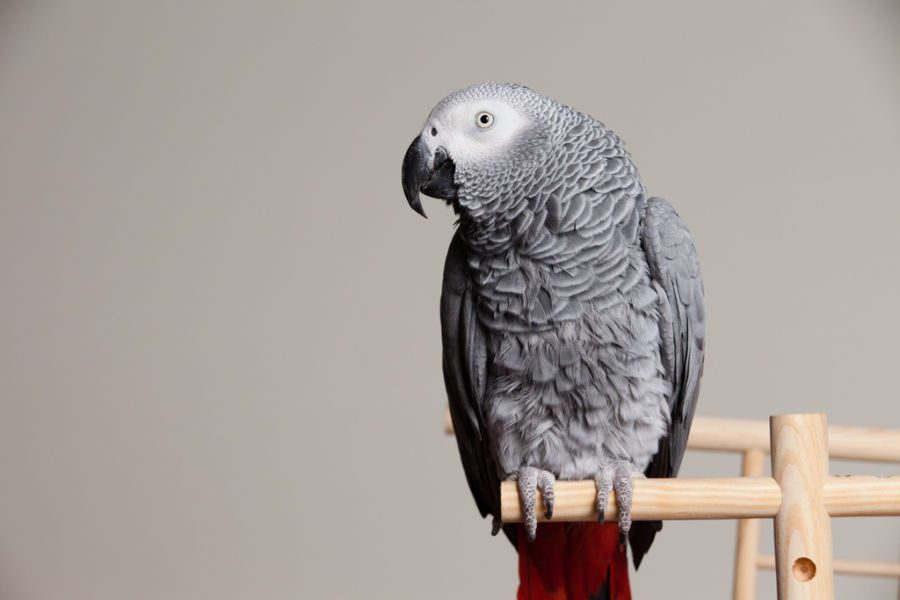How to Train a Parrot to Talk
Discover the secrets of how to Train a Parrot to Talk with our comprehensive guide. Learn about the best breeds, effective techniques, common mistakes, and more!

Parrots have long fascinated humans with their ability to mimic and talk. Teaching your feathered friend to speak can be a rewarding experience that deepens your bond. In this guide, we’ll explore the ins and outs of training a parrot to talk. From choosing the right breed to advanced techniques and FAQs, we’ve got you covered.
TABLE OF CONTENT
What are the Best Breeds of Parrots for Talking?
When it comes to talking parrots, not all breeds are created equal. Some parrot species are more adept at mimicry and speech than others. Here are a few of the best breeds for talking:
African Grey Parrots
African Greys are famous for having an excellent ability to communicate. They have an extensive vocabulary and can mimic human speech with remarkable clarity.
Amazon Parrots
Amazon parrots are known for their playful personalities and ability to learn phrases and words quickly. They often develop strong bonds with their owners.
Budgerigars (Budgies)
Budgies might be small, but they are excellent talkers. They are easy to train and can learn an impressive array of words and phrases.

Eclectus Parrots
Eclectus parrots are colorful and charismatic. They have a knack for learning words and phrases, making them a popular choice for those interested in talking birds.
Indian Ringneck Parrots
Indian Ringneck parrots are intelligent and curious. They can acquire a sizable vocabulary with time and continuous training.
How Long Does it Usually Take to Train a Parrot to Talk?
Training a parrot to talk is a gradual process that requires time and patience. The timeline can vary depending on several factors, including the parrot’s age, species, and individual personality. In general:
- Young parrots: It may take several months to a year for a young parrot to start speaking. Consistency in training is key.
- Older parrots: Older parrots can also learn to talk, but it might take longer than with younger birds. Their ability to mimic sounds remains, but they may be more set in their ways.

Can You Train an Older Parrot to Talk, or Is It Easier with Younger Birds?
While it’s true that younger parrots tend to learn faster and adapt more readily, older parrots can still be taught to talk. The key lies in patience, consistency, and understanding the individual bird’s capabilities and limitations. Younger birds are like sponges, absorbing information quickly, but with perseverance, older parrots can surprise you with their learning abilities.
What Are the Most Effective Techniques for Training a Parrot to Speak?
Training a parrot to talk involves a combination of techniques. Some of the best techniques are listed below:
Repetition and Consistency
Repetition is crucial in speech training. Repeat words and phrases consistently during daily training sessions. Be patient and reinforce positive behavior with treats or praise.
Positive Reinforcement
Reward your parrot with treats, praise, or affection when they mimic words or sounds correctly. Positive reinforcement encourages them to continue their efforts.
Contextual Learning
Teach words or phrases in context, associating them with actions or situations. For example, say “hello” when entering the room to reinforce the greeting.
Mimicking Your Parrot’s Sounds
Pay attention to the sounds your parrot makes naturally and use them as a foundation for words. If your parrot makes a sound that resembles “hello,” build upon it.

How Many Words Can a Parrot Typically Learn?
The number of words a parrot can learn varies widely, depending on factors such as the parrot’s species, age, and individual aptitude. Some highly intelligent species like African Greys can learn hundreds of words, while others may only learn a few dozen. It’s essential to set realistic expectations and celebrate every word your parrot learns.
Is It True That Male Parrots Are More Likely to Talk Than Female Parrots?
While there is a common belief that male parrots are more likely to talk, this is not entirely accurate. Both male and female parrots can learn to talk equally well. The talking ability of a parrot depends more on their individual personality, training, and exposure to human speech than their gender.
What Role Does Repetition Play in Teaching a Parrot to Talk?
Repetition is a fundamental aspect of teaching a parrot to talk. Repetitive training helps reinforce words and phrases in your parrot’s memory. Daily training sessions with consistent repetition help your parrot understand and mimic the desired words and sounds.
What Are Some Common Mistakes People Make When Training a Parrot to Talk?
Training a parrot to talk can be challenging, and there are common mistakes to avoid:

Inconsistent Training
Inconsistent training can confuse your parrot. Stick to a regular training schedule and use the same words and phrases consistently.
Punishment
Avoid punishing your parrot for not speaking correctly. Compared to negative reinforcement, positive reinforcement is far more effective.
Lack of Patience
Training takes time. Impatience can lead to frustration, both for you and your parrot. Be patient and celebrate small victories.
Overtraining
Don’t overwork your parrot. Training sessions should be brief and frequent to be most effective.
Are There Any Tools or Toys That Can Aid in Training a Parrot to Speak?
Yes, there are tools and toys that can facilitate speech training:
Training Perches
Training perches provide a stable platform for your parrot during training sessions, helping them focus on mimicking sounds and words.
Audio Recordings
Playing audio recordings of desired words and phrases can encourage your parrot to mimic them. Be sure to choose clear, high-quality recordings.
Interactive Toys
Certain interactive toys are designed to stimulate your parrot’s speech. These toys can engage your parrot in language development activities.
What’s the Best Time of Day to Train Your Parrot to Talk?
Parrots are often most active and alert in the morning and early evening. Consider scheduling training sessions during these times when your parrot is more receptive to learning. However, the key is to find a time that works best for both you and your parrot’s daily routine.

Can You Train a Parrot to Understand the Meaning of the Words It Says?
Parrots can learn to associate words with actions or objects, but their understanding is limited compared to humans. They may repeat words in context but may not fully grasp their meanings. Nevertheless, teaching your parrot to respond to specific words or phrases can be useful for communication.
How Can You Reinforce Good Speaking Behavior in Your Parrot?
Reinforcing good speaking behavior is essential for ongoing training:
- Use positive reinforcement: Reward your parrot with treats, praise, or attention when they speak correctly.
- Be patient: Encourage your parrot to keep trying, even if they make mistakes.
- Practice regularly: Consistent practice reinforces good speaking behavior.
What Foods or Treats Work Best for Rewarding a Parrot During Training?
Parrots have individual preferences, but some common treats include:
- Small pieces of fresh fruit
- Nutritious seeds or nuts (in moderation)
- Commercial bird treats
- Praise and affection
Experiment to find what motivates your parrot the most, but always prioritize their health and nutrition.
How Important Is the Parrot’s Environment for Successful Speech Training?
The parrot’s environment plays a significant role in speech training:

- Ensure a quiet and comfortable space for training to minimize distractions.
- Adequate lighting and temperature control help create a conducive learning environment.
- Remove potential stressors or sources of fear that could hinder the training process.
What Should You Do If Your Parrot Develops Bad Speaking Habits?
Correcting bad speaking habits requires patience and consistency:
- Identify the problematic behavior.
- Redirect your parrot’s attention to the correct word or phrase.
- Use positive reinforcement when they say the desired words correctly.
- Avoid reinforcing the bad habit by ignoring it.
Can You Train a Parrot to Sing Along with You?
Yes, you can train some parrots to sing along with you. Start by teaching them simple tunes and gradually progress to more complex songs. Singing together can be a fun bonding experience.
Is It Easier to Train a Parrot to Mimic Sounds First Before Words?
Training your parrot to mimic sounds, such as whistles, can be a useful precursor to teaching words. It helps your parrot develop the necessary vocal skills and can make the transition to words smoother.
Are There Any Risks or Downsides to Training a Parrot to Talk?
While training a parrot to talk can be rewarding, it’s essential to be aware of potential downsides:

- Excessive noise: Your parrot may become noisy when they learn to talk, which can be disruptive in certain living situations.
- Frustration: Training can be frustrating for both you and your parrot if progress is slow.
- Limited vocabulary: Some parrots may not develop an extensive vocabulary despite your efforts.
How Can You Train a Parrot to Say Specific Phrases on Cue?
Teaching your parrot to say specific phrases on cue involves repetition and positive reinforcement:
- Select the phrase you want to teach.
- Repeat the phrase consistently during training sessions.
- Reward your parrot when they say the phrase on cue.
What Are Some Fun Phrases or Tricks You Can Teach a Talking Parrot?
Training your talking parrot can be a creative and enjoyable endeavor. Here are some fun phrases and tricks to consider:
- Greetings: Teach your parrot to say “hello” or “good morning.”
- Counting: Train them to count, even if it’s just to a few numbers.
- Whistling tunes: Encourage them to whistle popular melodies.
- Personalized phrases: Create unique phrases that reflect your parrot’s personality or your relationship.
Conclusion
Training a parrot to talk is a labor of love that requires patience, consistency, and a deep bond with your feathered friend. By choosing the right breed, using effective techniques, and avoiding common mistakes, you can embark on a rewarding journey of communication with your parrot. Remember that every parrot is unique, and progress may vary, but the joy of hearing your parrot speak is well worth the effort. So, embrace the adventure of teaching your parrot to talk and enjoy the special connection that comes with it.
